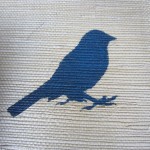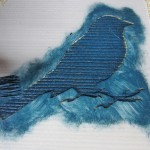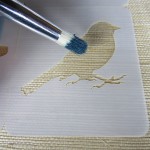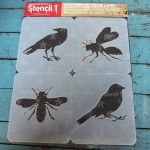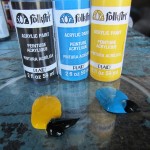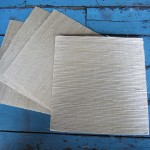Whether you have a significant other or just love yourself, why not tote around the good vibes? This easy how-to will show you how easy it is to custom stencil a tote bag using our HEARTS 4-pack stencil, some multi-surface paint, and a stencil brush on a basic cotton tote.

FIrst thing you want to do is insert a piece of cardboard into the tote. This way your paint won’t bleed through to the back of the bag and it will provide you a flat surface to stencil on.
Now place your stencil where you’d like your design to appear.
.
Time to whip our the fabric paint!

Stenciling is a dry-brush technique. Always remove excess paint from your brush before you paint in the design.

I usually fill in my designs completely and evenly but I wanted these hearts to look airbrushed with a little dimension. The way you achieve this effect is by working from the edges inward in a swirling motion. As the brush gets less paint on it, you then lightly paint in the center.

See

Repeat the process. I switched colors but I did not wash my brush or my stencil as I wanted to blend colors. That’s up to you!

And again!

I did this four times, sort of a motion to the hearts…

Once the design dries, heat seal with an iron for 30-60 seconds per area.

Tote your happy hearts around like my friend Libby did, spreading a little love in the NYC subway!












